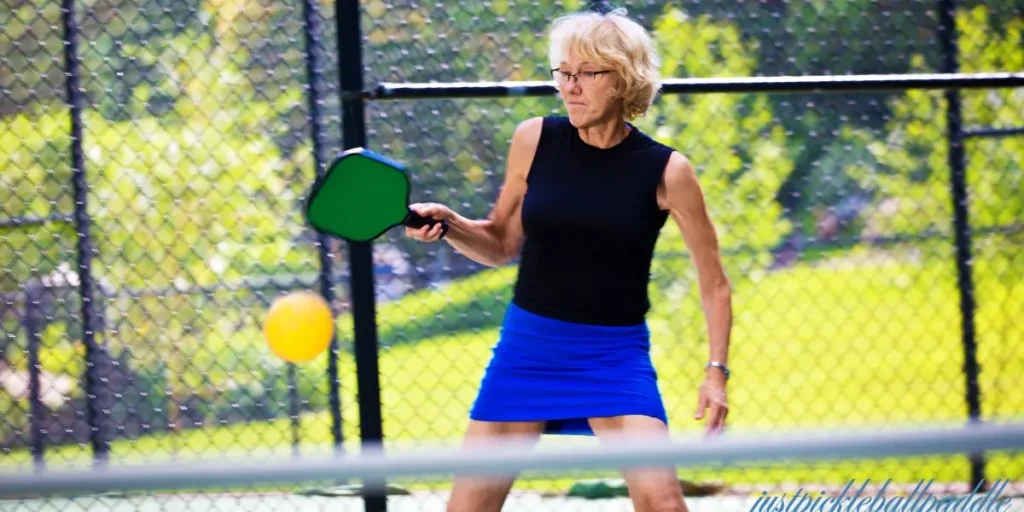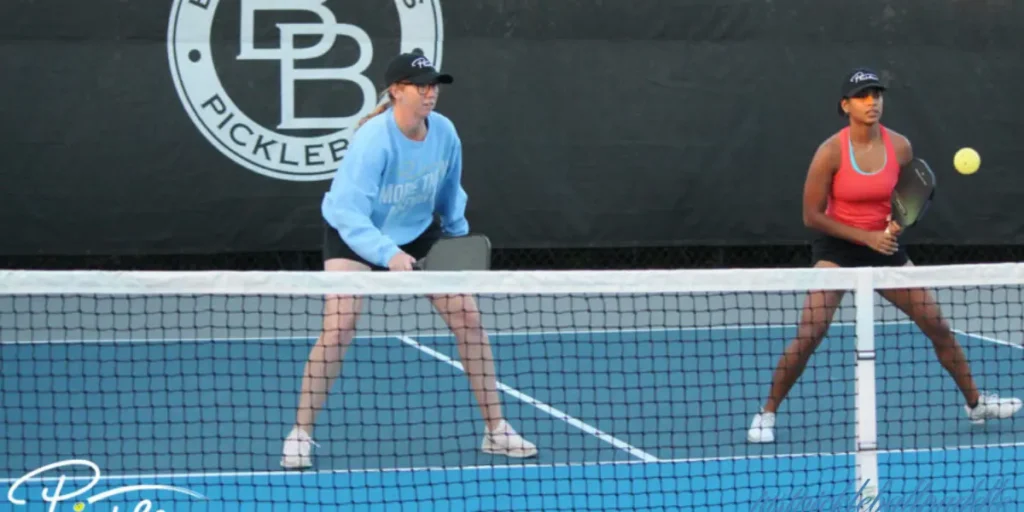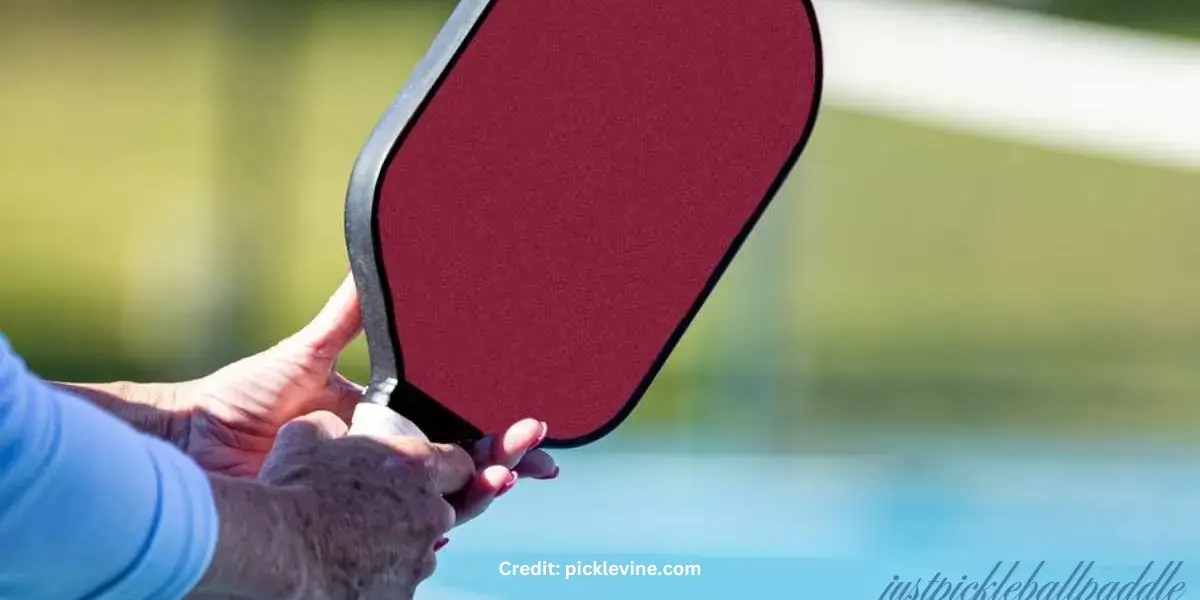Ever found yourself reaching for a pickleball shot, only to realize your dominant hand isn’t in the best position to make the play? Many players wonder if they can switch hands mid-game to gain an advantage. The quick answer is yes—switching hands in pickleball is completely legal.
But the real question is, should you do it? While some players use this technique strategically, others argue that it creates more problems than benefits.
In this helpful article, we’ll explore the rules surrounding hand-switching, its advantages and disadvantages, and expert strategies to help you decide whether it’s a move worth incorporating into your game.
Is Switching Hands Allowed in Pickleball (USA Pickleball Official Rulebook)?
There are no rules in pickleball that prohibit switching hands. According to the USA Pickleball Official Rulebook, players are free to hold their paddle in whichever hand they choose at any time. This means you can switch from your right hand to your left and vice versa as often as you like during a match.
Some players mistakenly believe that hand-switching is against the rules or that it may result in a fault, but that is not the case.
Despite the legality of this move, professional players rarely switch hands during competitive play. The reason is simple—elite-level pickleball is extremely fast-paced, and switching hands can take precious milliseconds, making it difficult to react quickly to an opponent’s shot.
Most advanced players prefer to strengthen their backhand or use footwork adjustments to compensate rather than switching hands mid-game.
Pros and Cons of Switching Hands in Pickleball
Switching hands in pickleball is a technique that some players use to improve their gameplay, but it also comes with challenges. While it can enhance reach and shot control, it can also slow reaction time and affect consistency.

Pros of Switching Hands
One key advantage of switching hands is increased reach. When a shot is hit wide, a player can extend further and return the ball with a strong forehand rather than a weaker backhand. This can be especially helpful in fast-paced rallies.
Another benefit is greater shot power and consistency. Many players have a much stronger forehand, and by switching hands, they can maintain control and generate forceful returns. This is particularly useful in aggressive net play or deep shots.
Hand-switching can also make a player’s game more unpredictable. If an opponent cannot anticipate which hand will be used, it becomes harder to set up defensive plays. However, this strategy must be executed smoothly to avoid hesitation or loss of control.
Cons of Switching Hands
Despite its advantages, switching hands can cause delays, which is a major drawback in a fast-paced game. The extra time spent transitioning the paddle may result in missed shots or weak returns, especially against skilled opponents.
Another issue is paddle control. Grip adjustments during hand-switching can lead to mishits or even loss of paddle stability. This can be costly in high-pressure situations where precision is critical.
Lastly, hand-switching can disrupt footwork and positioning. Instead of focusing on smooth movement, players may find themselves out of position while switching hands. Because of these challenges, most advanced players prefer to strengthen their backhand instead of relying on hand-switching.
When Should You Switch Hands in Pickleball?
Although switching hands is not a common technique among professional players, there are specific situations where it might be beneficial.
If a shot forces you far outside your comfortable hitting zone and you have no time to reposition, switching hands could allow you to hit a stronger return.
This is particularly useful when reaching for a cross-court shot that would otherwise require an awkward backhand stretch. Defensive situations also present an opportunity to switch hands, especially if doing so allows you to get back into position more effectively.
Players who naturally have control in both hands or those who have trained to use both a right and left-handed forehand may find hand-switching a useful tool in their game.
However, for most players, developing a strong backhand and improving footwork is a more effective approach to handling difficult shots.
How to Switch Hands Without Losing Control
Switching hands in pickleball can be useful, but it requires proper execution to avoid losing control. A mistimed or uncoordinated switch can slow down reaction time, weaken shot accuracy, and disrupt balance.

To ensure smooth transitions, players must focus on grip, timing, and consistent practice.
Use a Neutral Grip
Starting with a neutral grip allows for a seamless transfer between hands without needing major adjustments. Holding the paddle in a balanced position makes it easier to switch hands without fumbling. Players who maintain a relaxed but firm grip can execute the transition more efficiently.
Switch at the Right Time
Timing is critical when switching hands. The transfer should happen just before hitting the ball to avoid hesitation or a weak return. If the switch is too late, the player may lose control or miss the shot entirely. Anticipating the opponent’s shot and preparing in advance can make the switch smoother.
Practice for Speed
Consistent practice helps players develop muscle memory for hand-switching. Drills such as alternating forehand shots with both hands or reacting to unpredictable ball placements improve reflexes. Shadow drills, where players simulate hand-switching without a ball, can also enhance transition speed.
How Pros Use Hand-Switching
Experienced players use hand-switching selectively rather than relying on it constantly. They train their non-dominant hand through controlled drills, ensuring they can execute switches smoothly in high-pressure situations.
However, most competitive players still prefer a strong backhand over frequent hand-switching.
Alternative Techniques Instead of Switching Hands in Pickleball
Instead of switching hands in pickleball, players can focus on improving their backhand, using a two-handed backhand, or refining their footwork to handle challenging shots more efficiently.
Strengthening the backhand is one of the most effective alternatives, as it eliminates the need for hand-switching. A well-trained backhand allows players to return shots with confidence, reducing reliance on the dominant hand.
For those who struggle with a one-handed backhand, adopting a two-handed backhand can provide extra power and stability. This technique helps generate stronger returns, especially against fast shots or deep serves.
Improving footwork is another key strategy. Proper positioning ensures that players are in the best possible stance to hit the ball effectively, reducing the need to switch hands during play.
FAQs
No, most professional players rely on a strong backhand rather than switching hands. While some pros may occasionally switch for specific shots, it’s generally considered inefficient at higher levels of play.
It depends on your skill level and playing style. If you struggle with backhand shots, switching hands might help in certain situations. However, relying on it too much can slow down your reaction time and lead to inconsistencies.
Not directly, as it is allowed by the rules. However, frequent switching can cause unforced errors due to loss of grip, slower shot execution, or difficulty maintaining proper footwork and balance during fast-paced rallies.
For most players, developing a strong and reliable backhand is more effective. A well-practiced backhand allows for quicker transitions and better control, whereas switching hands can introduce unnecessary complexity and slow down your reaction time.
Conclusion
Switching hands in pickleball is a legal and sometimes useful strategy, but it comes with both advantages and drawbacks. While it can improve reach, shot power, and unpredictability, it can also slow down reaction time and lead to control issues.
Most competitive players, including professionals in USA Pickleball tournaments, prefer to develop a strong backhand stroke rather than relying on hand-switching.
For those who struggle with their backhand, alternative techniques like a two-handed backhand, improved court positioning, and better paddle grip adjustments can provide more consistency.
Ultimately, the best approach depends on individual playing style and skill level. Whether you switch hands or refine your technique, mastering pickleball strategy is key to improving performance and winning more matches.

